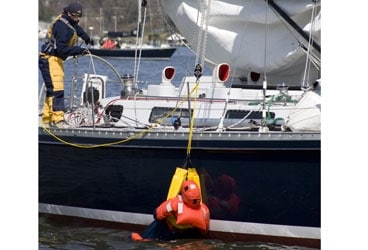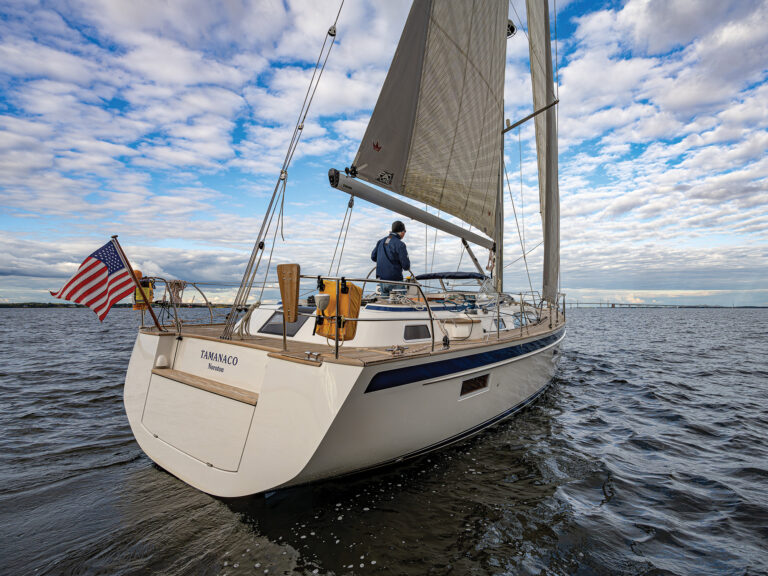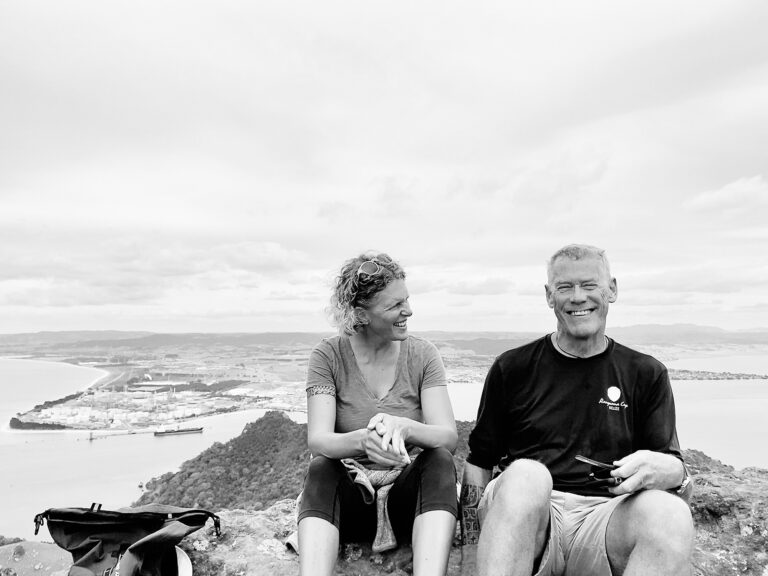
disasters 368
I must say I felt a little silly sprawled on my stomach with my nose pushed into the carpet of the ballroom at the Hyatt Regency in Newport, Rhode Island. Dave, who I’d met only minutes earlier, loomed over me as I pondered when they’d last vacuumed the floor. “Are you all right?” he bellowed, touching me on the shoulder. “Call 911!” he shouted as similar orders reverberated from groups around the room. Then Dave straightened my left arm over my head, and with one hand on my neck, he grabbed my hip with his other and rolled me onto my back. “How deadlike should I be?” I wondered as his ear hovered just inches over my face and he counted to 10. “Should I breathe, maybe just a little?”
It was hard to look graceful. Surely there must be another dummy that could be used for this, I thought, as Dave stopped just short of locking lips or performing C.P.R. That, we were told by our first-aid instructors, would come later as we practiced rescue breathing on a plastic head attached to a chest with bellows. That, too, seemed a little awkward, though instructive.
The exercise was part of a day’s worth of first-aid and C.P.R. training that complemented this spring’s Safety at Sea seminar hosted by U.S. Sailing and the Cruising Club of America, organizers of the biennial Newport-Bermuda Race. Part of every crew entered in the race must attend one of these safety sessions, though a good number of cruisers were also on hand to be better prepared for their own sailing adventures. An apparent glutton for safety, I headed a couple of weeks later to the U.S. Naval Academy in Annapolis, Maryland, where I attended a second S.A.S. session, this one hosted by U.S. Sailing and the Marine Trades Association of Maryland. In Annapolis, I was spared the indignity of once again being a test dummy by instead choosing a curriculum that sounded too intriguing to pass up: jump into a pool, play with life rafts, jury-rig a mast using a pole and lines, fight a fire, and learn how to set storm sails.
Let’s be honest: All of these are things that most of us hope not to do on our own boats. But as the saying goes, “One never knows, does one?” And while some of the topics were downright funny in a seventh-grade sort of way-lube up the sea-sickness suppositories; use a harness so you won’t be found floating with your zipper open-even these topics are worthy of a skipper’s consideration.
The fact is, things go wrong on boats. People get cut, booms smack heads, galleys catch fire. Hoses burst. Storms happen. And when any of these or a laundry list of other calamities occur, a small boat on a big ocean is a pretty lonely place to be. At home, when someone goes down, you grab the cell and dial for help. Halfway to England, well, let’s just say a corpse makes a piss-poor crew mate. So when things turn south, to steal a line from Ghost Busters, “Who you gonna call?”
Each year at Safety at Sea seminars around the country, hundreds of sailors spend a day or maybe two thinking about this very question with veteran watermen and safety experts. The answers aren’t always clear cut, but it seems to me that you have a lot better chance of coming up with a right one if you’ve put a little thought into it ahead of time.
I went into the two seminars wondering what they were all about. I came out realizing that I’ve got a lot to learn. And that’s the point, when asked the questions, you want to figure out the answers. So after a double dose of safety, what do I think? I think that they were days well spent and that you should attend one if you can. You never know what Mother Ocean’s going to toss your way.
Mark Pillsbury







